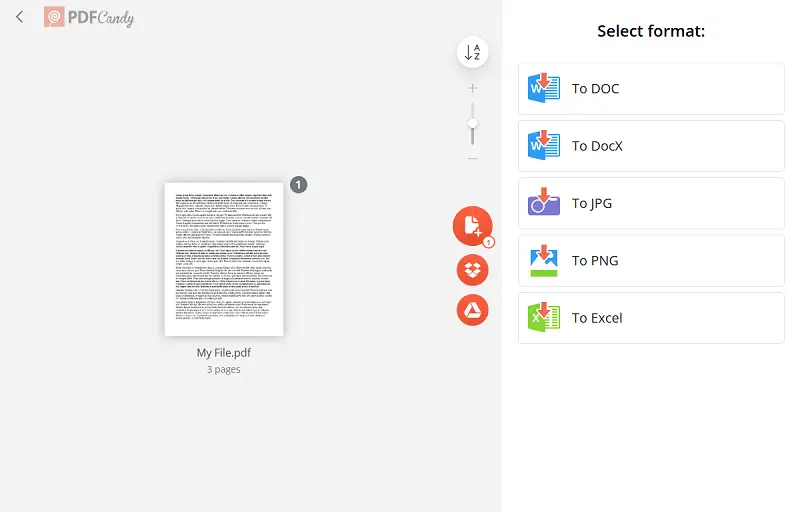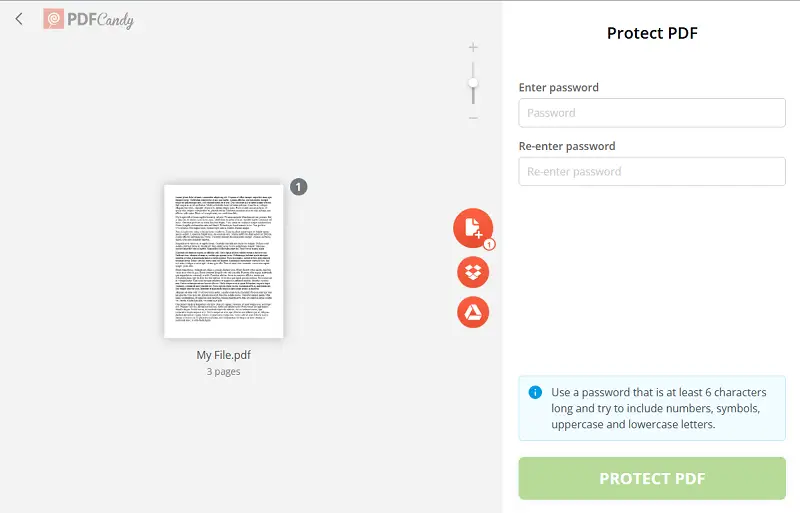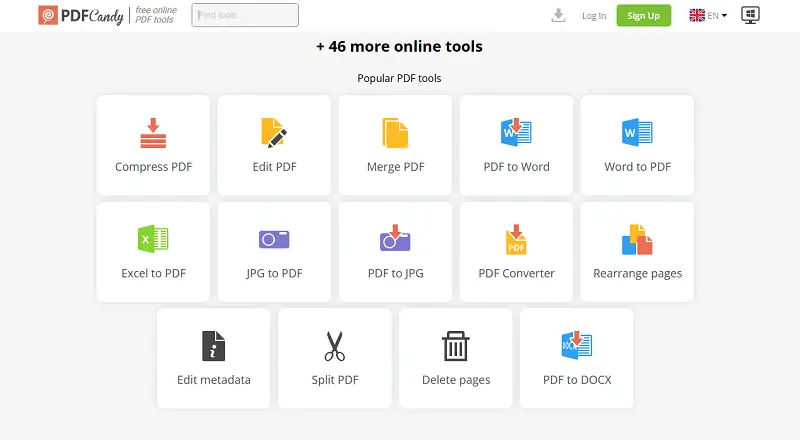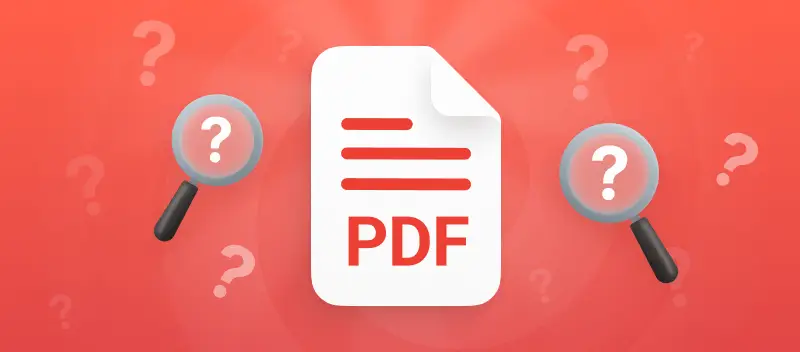PDF files are widely used by individuals and organizations across various sectors.
From user manuals to interactive forms, the PDF format has become ubiquitous in our daily lives. Yet, despite its widespread use, many may find themselves wondering: what exactly is a PDF?
In this article, we provide an overview of the PDF format, its applications, its advantages over other document types, and how to work with the extension.
What Does PDF Stand for?
The PDF acronym stands for Portable Document Format. This file type was invented by Dr. John Warnock, the co-founder of Adobe, in 1991.
The PDF format as we know it today originated under the name The Camelot Project. By 1992, it had evolved into the PDF.
PDF has established itself as the standard for reliably and consistently distributing electronic files. Fundamentally, a PDF file combines text, images, fonts, and other components into a single, self-contained document that can be easily viewed, printed, and shared.
Unlike other file formats that can change in layout depending on the application or operating system, PDFs guarantee consistent content display. Whether it's a detailed report, a brochure, or a presentation, PDFs retain the fonts, images, colors, and layout exactly as the creator intended.
Despite being more than 30 years old, the PDF format is still going strong and is trusted by organizations worldwide.
PDF File Types
| PDF File Type | Description |
|---|---|
| PDF/A | Designed for long-term preservation, maintaining document content and appearance for future access. |
| PDF/X | Used in printing to ensure consistent color reproduction and accurate print results. |
| PDF/E | Tailored for engineering documents, supporting detailed annotations and multimedia content. |
| PDF/UA | Focuses on accessibility for users with disabilities, ensuring compatibility with screen readers. |
| PDF Portfolio | Bundles multiple files, preserving their original formats within a single PDF file. |
How to Open a PDF?
Since PDFs are universally compatible, they can be viewed on any device. There are numerous ways to read them, and you likely already have at least one of these methods available on your PC by default.
For instance, most modern internet browsers come equipped with the ability to view PDFs. As a result, when you open a PDF, it frequently appears as a page in your browser rather than as a document, like Word.
.webp)
You can also read PDFs using software such as Adobe Acrobat, Preview, and others. You may need to download and install these apps on your computer.
Another method for viewing PDF files is through cloud storage services, such as Google Drive or Dropbox. These services come with a built-in PDF reader.
How to Edit a PDF File?
Generally, PDFs are used when the creator wants to share a document without any modifications by the recipients. However, if you need to edit a PDF, there are both online services and offline apps available.
For instance, PDF Candy offers an online editor where you can highlight or strike out text, insert images or shapes, draw lines, or white out content, among other features.
(1).webp)
How to Convert PDF files?
If you need a PDF file in a different format, you can easily convert it. For example, you can turn your PDF into DOCX or JPG. Additionally, you can save PDFs as other file types, such as PPT, XLSX, and ODT.

How to Protect PDF?
PDFs can be encrypted to ensure that only authorized individuals can access the files. In PDF Candy, you can accomplish this online by using the "Protect PDF" tool. Simply select this option, enter a secure password, and your documents will be protected.

What Else Can Be Done with PDF?
- Rearrange pages in PDF without affecting their quality or size of the file.
- Compress PDF if it's too large to send via email or other means.
- Reorder PDF pages to change the page sequence of your documents.
- Combine PDFs in one for convenient file storing and sharing.
- Add page numbers to mark the pages in the ready papers.
- Sign PDF online to add a signature to the needed pages of your document.

What Are the Benefits of PDF Format?
- Cross-platform compatibility. PDFs can be viewed on virtually any device and operating system without compromising formatting. Whether you're using a computer, tablet, or smartphone, this extension ensures consistent display across platforms.
- Security features. PDFs offer robust security options, including password protection, encryption, watermark, and digital signatures, to safeguard sensitive information from unauthorized access or tampering. These features make PDFs ideal for sharing confidential documents securely.
- Compression Capability. PDFs can be compressed without compromising quality, resulting in smaller sizes that are easy to share via email or upload/download from the internet.
- Interactive elements. PDFs support a wide range of interactive elements such as hyperlinks, bookmarks, forms, and annotations. These features enhance the user experience and enable the creation of presentations, eBooks, and digital forms.
- Printability. PDFs are optimized for printing, ensuring high-quality output on paper. They preserve the layout and design of the document, including fonts, images, and colors, making them ideal for producing professional-looking print materials.
- Archival quality. PDFs are designed for the long-term preservation of digital documents. They encapsulate all necessary elements in a single file, including fonts and graphics. Hence, the document remains intact and accessible for years to come.
- Accessibility. PDFs support accessibility features such as text-to-speech conversion, screen reader compatibility, and tagging for assistive technologies. This ensures that individuals with disabilities can access and interact with PDF documents effectively.
How Does PDF Compare to Other Formats?
Here are some common formats that PDFs are often contrasted to:
| Format | Comparison |
|---|---|
| Word Documents (DOCX) | Like PDFs, DOC format is widely used for creating and sharing text-based documents. However, while they are primarily used for word processing, PDFs are more suitable for preserving the layout and formatting of documents across different platforms. |
| JPEG/PNG Images | JPEG and PNG images are commonly used for storing and sharing visual content such as photographs and graphics. While pictures are static and non-editable, PDFs can contain images along with text, hyperlinks, and other interactive elements, making them more versatile for document creation. |
| HTML (HyperText Markup Language) | HTML is the standard markup language for creating web pages. While HTML is used for designing and displaying content on the web, PDFs can be seen as snapshots of online pages, providing a consistent representation of it for offline viewing and printing. |
| ePub | ePub is an eBook format designed for reflowable content, allowing readers to adjust font sizes and layouts to fit their preferences. ePub is ideal for reading on mobile devices. PDFs are more suitable for fixed-layout documents with precise formatting requirements, such as manuals and reports. |
| Excel Spreadsheets (XLSX) | Excel spreadsheets are used for organizing and analyzing data in tabular format. While Excel files are optimized for numerical data and calculations, PDFs can be used to share static snapshots of spreadsheets, ensuring consistent presentation across different devices and software. |
| PowerPoint Presentations (PPT) | PowerPoint presentations are used for creating visual slideshows for business, education, and other purposes. While these files are interactive and editable, PDFs can be utilized for presenting on a device without PowerPoint or for printing purposes. |
FAQ
What editing capabilities do PDF editors offer?
PDF editors offer a wide range of editing capabilities, including adding, deleting, and modifying text; annotating with comments, highlights, and drawings; inserting, deleting, and reordering pages; and converting PDFs to other file formats.
Can I edit a scanned PDF document?
Yes, you can edit a scanned PDF document by using Optical Character Recognition (OCR) technology, which converts scanned images into editable and searchable text. Many PDF editors offer built-in OCR functionality for this purpose.
Can I add or remove images from a PDF file?
Yes, you can add new images to a PDF document by inserting them from your computer or another source. Similarly, you can delete existing images from a PDF using the editing tools provided by PDF editors.
What is a PDF: Conclusion
In conclusion, PDF is a cornerstone of modern communication, offering unparalleled versatility and reliability. From its inception by Adobe Systems to its widespread adoption across industries and platforms, the PDF format has revolutionized the way we create, share, and preserve documents.
As an indispensable tool in our digital arsenal, the PDF continues to empower individuals and organizations worldwide. They ensure seamless access to information across diverse devices and environments.



.webp?w=420&h=184)
.webp?w=420&h=184)